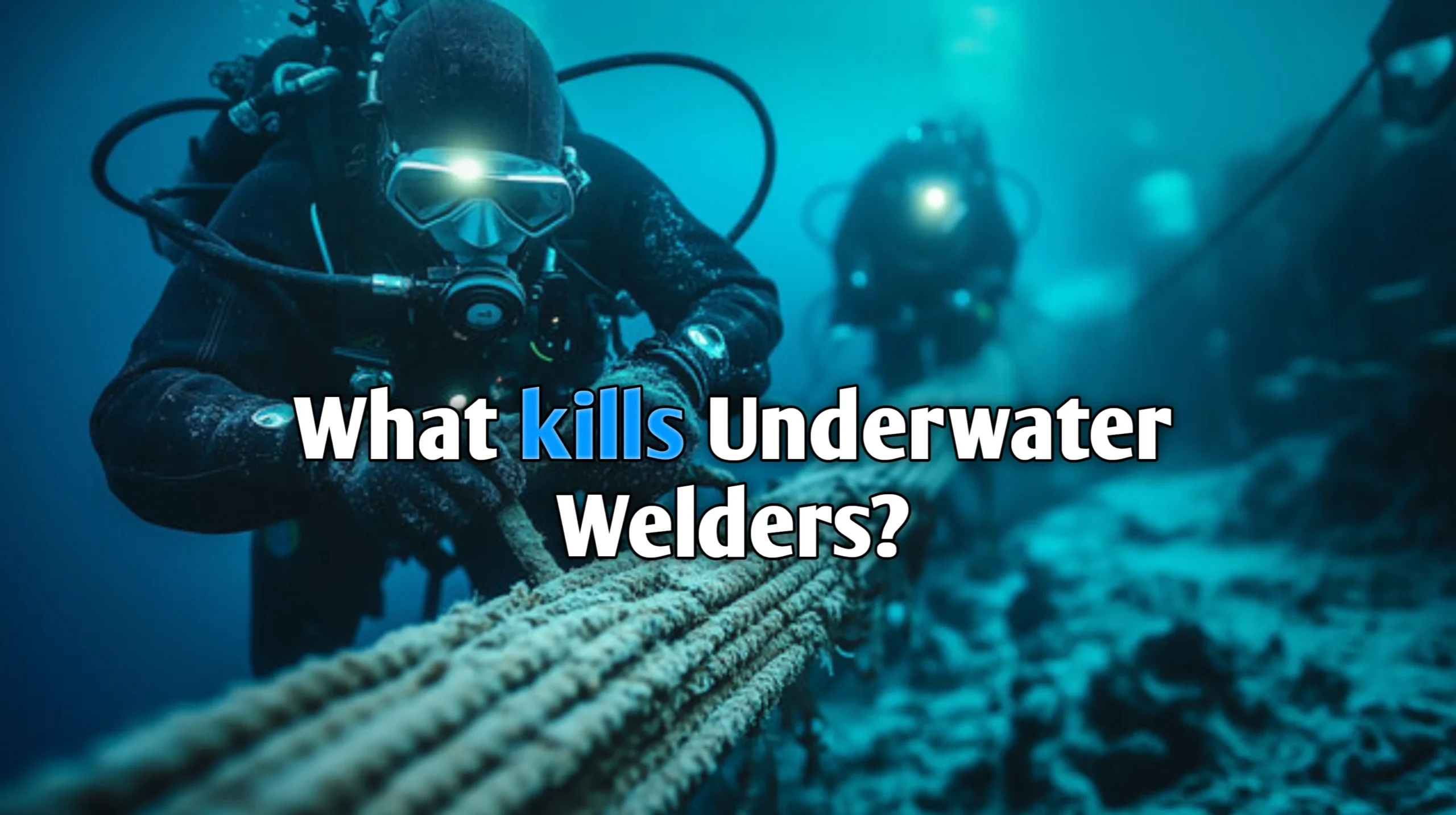As an underwater welder, I’ve spent many years working in some of the most dangerous environments you can imagine. People often ask me, “What actually kills underwater welders?” It’s a serious question, and there are risks involved. But with proper training, equipment, and safety precautions, the risks can be minimized. Let me walk you through what we face on the job and how we protect ourselves.
Electric Shock – The Biggest Danger
The most common fear when it comes to underwater welding is electric shock. Working with electricity underwater seems like a recipe for disaster, right? But here’s the thing — we use direct current (DC) instead of alternating current (AC). DC is much safer for underwater welding because it doesn’t spread like AC does in water.
That said, the risk is still there if the equipment isn’t maintained properly. A faulty cable or bad connections can lead to a dangerous situation. That’s why we always check our gear before diving in and make sure everything is in top condition.
Decompression Sickness – A Hidden Danger
Another serious risk for underwater welders is decompression sickness, also known as “the bends.” This happens when a diver ascends too quickly after spending time at depths where the air pressure is higher than at the surface. If you rise too fast, nitrogen bubbles form in your blood and can cause severe pain, joint problems, and even death.
To avoid decompression sickness, we follow strict decompression procedures. This usually means taking slow ascents, using special equipment like decompression chambers, and following dive tables that tell us how long we can stay at certain depths.
Drowning – A Constant Threat
Even though we’re experts in diving, drowning is still a risk, just like any other form of diving. If something goes wrong with our equipment, like a faulty air supply or a snagged umbilical cable, it can lead to serious problems. While we’re trained to handle emergencies, this is still a constant concern when working underwater.
That’s why we never work alone. There’s always a team above water who monitors us and is ready to help if needed. Having a buddy system is a vital part of staying safe.
Explosions and Fires – Not a Common Risk, But Real
It may sound strange, but underwater welding sometimes involves working near explosive environments. For example, we may be welding on old pipelines or working around gas lines. A small spark from the welding equipment could cause a fire or an explosion in certain situations.
This danger is mostly prevented by using special tools designed for underwater welding, which don’t spark as much. Also, we avoid areas with hazardous materials unless the environment is cleared and secure.
Hypothermia – A Silent Killer
Working in cold water can lead to hypothermia, where your body loses heat faster than it can produce it. This is especially a concern if we’re working for long hours in deep, cold waters.
We use insulated suits and dry suits that trap heat and keep us warm. But no matter how much gear we wear, prolonged exposure to cold water can cause your body temperature to drop dangerously. That’s why time limits and regular breaks are essential.
Pressure and Equipment Failure – Deadly Risks
Another risk is the high pressure at great depths. The deeper we go, the higher the pressure becomes. If something goes wrong with our diving equipment, like a faulty helmet or malfunctioning breathing apparatus, it could lead to serious injury or even death.
Again, regular checks of all equipment are mandatory, and we use specialized equipment designed to withstand extreme underwater pressures. Maintaining equipment is just as important as knowing the techniques of welding.
How Do Underwater Welders Not Get Shocked?
My Final Thoughts
So, what kills underwater welders? The biggest threats are electric shock, decompression sickness, drowning, explosions, hypothermia, and equipment failure. But here’s the thing — underwater welding isn’t just about taking risks. It’s about knowing these risks and taking the right precautions to avoid them.
As an underwater welder, we’re trained to handle all of this and more. We use the best equipment, follow strict procedures, and work with a team that looks out for each other. While the job is dangerous, with the right preparation, it’s a job that can be done safely.

